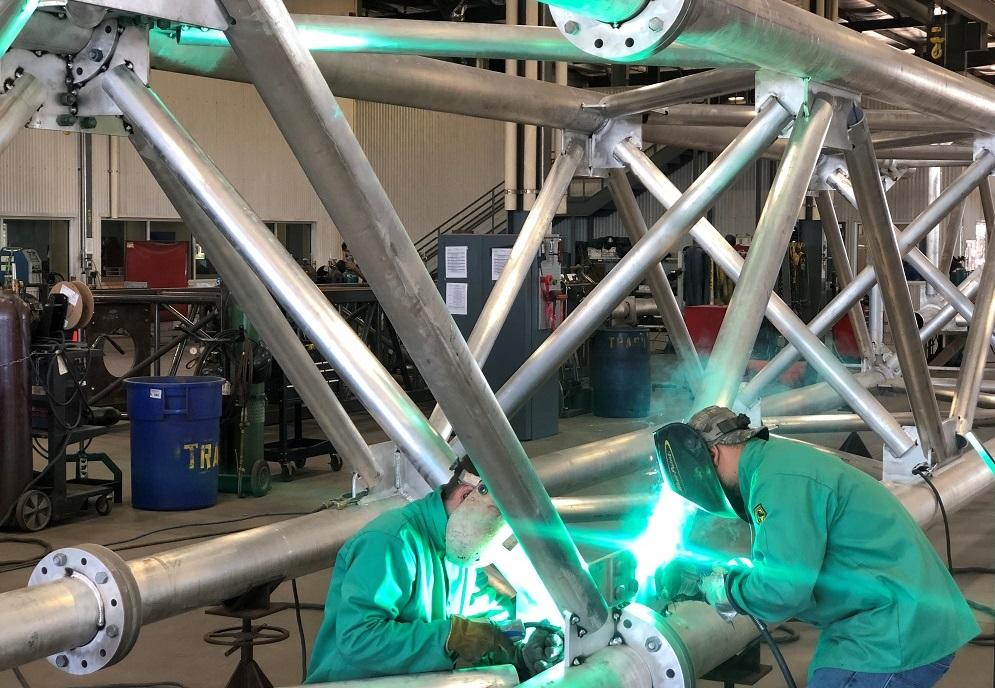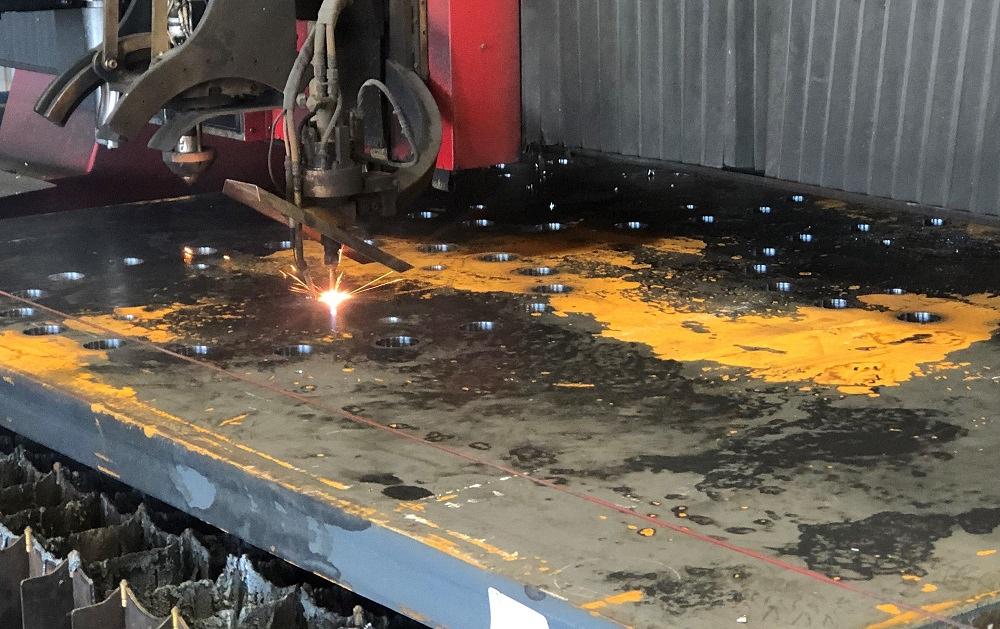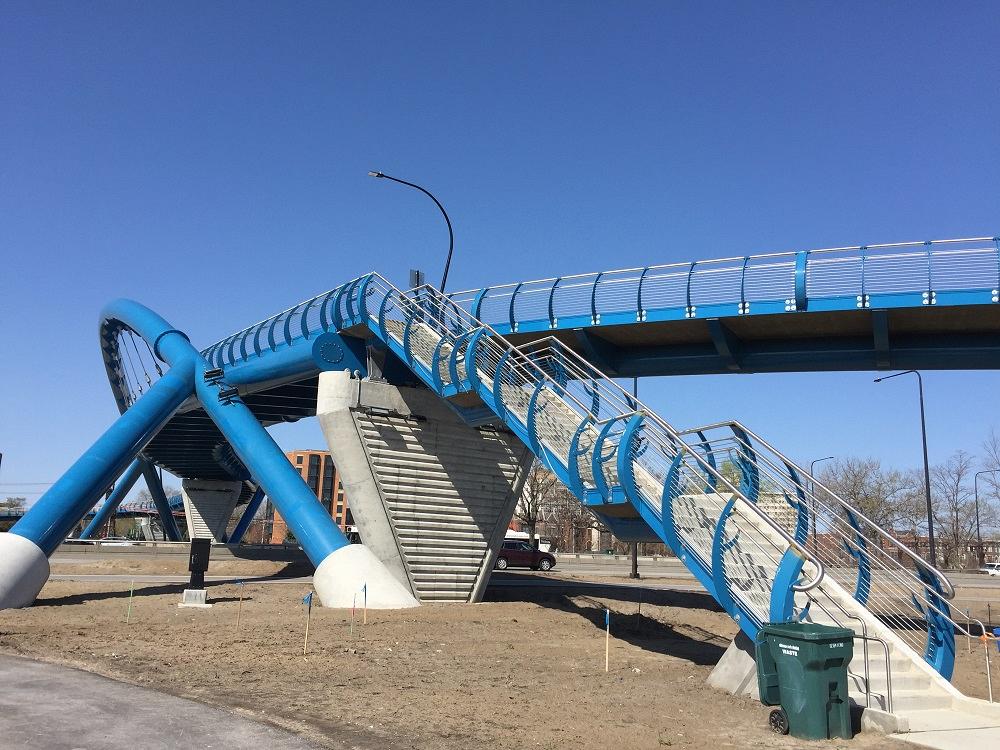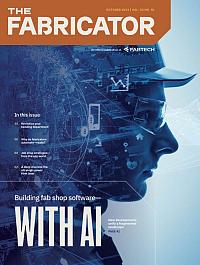Senior Editor
- FMA
- The Fabricator
- FABTECH
- Canadian Metalworking
Categories
- Additive Manufacturing
- Aluminum Welding
- Arc Welding
- Assembly and Joining
- Automation and Robotics
- Bending and Forming
- Consumables
- Cutting and Weld Prep
- Electric Vehicles
- En Español
- Finishing
- Hydroforming
- Laser Cutting
- Laser Welding
- Machining
- Manufacturing Software
- Materials Handling
- Metals/Materials
- Oxyfuel Cutting
- Plasma Cutting
- Power Tools
- Punching and Other Holemaking
- Roll Forming
- Safety
- Sawing
- Shearing
- Shop Management
- Testing and Measuring
- Tube and Pipe Fabrication
- Tube and Pipe Production
- Waterjet Cutting
Industry Directory
Webcasts
Podcasts
FAB 40
Advertise
Subscribe
Account Login
Search
One metal fabricator’s advice to build a better shop culture
Lessons from a decade of business transformation at Wichita, Kan.-based Metal Pros LLC
- By Tim Heston
- October 11, 2023
- Article
- Arc Welding

Two welders at Metal Pros LLC weld an aluminum truss that will hold a highway sign. Welders are qualified to various structural standards, including AWS D1.1, D1.2, and D1.6. Images: Metal Pros LLC
Dan Kilby has been encouraged by all the infrastructure investment headlines, and for good reason. Next time you’re on the highway, take a look at the signage—specifically, the metal trusses that hold the iconic green signs that show which way is what and how far you have to go. If you’re driving in certain states, those trusses might have come from Metal Pros, which Kilby purchased back in 2012. For the 73-employee fabricator based in Wichita, increased infrastructure spending is good news.
It’s especially good news considering how far the fabricator has come during the past decade. When Kilby purchased the company, it had only 14 employees and $2 million in sales. “The customer base was minimal at that time,” he said, “and that was mainly due to quality and on-time delivery issues.”
To grow, Kilby knew he needed to address the operational challenges and institute more formalized quality systems, but to do that, he also knew he needed to tackle the root cause. “We had a big cultural change here,” he said. “Once we had the culture pointed in the right direction, things really began to take off.”
So many leaders in this business point to shop culture as the No. 1 key to success. But what is culture, really? It’s tough to define. Still, Metal Pros’ story involves several concrete improvement steps—six signposts that, when followed, helped guide the fabricator toward cultural transformation.
1. Tear Down the Walls
How many help-wanted ads say that someone needs to show “ownership” over a task or process? That sounds great, but sometimes, the structure of the business smothers all sense of ownership employees might have. At Metal Pros, Kilby watched out for any instance where people threw tasks (and any problems they missed) “over the wall” to another department.
To tackle this problem, Kilby first turned to the estimating role. Today, instead of estimators throwing jobs “over the wall” to production, Metal Pros has broadened the estimation role. They’re not just estimators; they’re project managers. That is, the estimator provides the quote, processes the order, and manages the entire fabrication from beginning to end. This gives each customer a single point of contact, a person who’s familiar with every manufacturing step the job requires.
“This is just an opinion, but I think customers have a stronger relationship with a company if they’re just dealing with one person all the time. It also gives the estimator some skin in the game,” Kilby said, adding that this was one of the earliest changes made after buying the company in 2012.
The change addressed an age-old problem, not just in metal fabrication but across various businesses. Sales and estimating personnel are incentivized to grow the top line, yet they focus solely on winning the bid. Restructuring the estimator role into project management, estimators see what happens to jobs from the moment they’re won until the final fabricated component leaves the shipping dock.
Metal Pros also initiated metrics that capture variances in production time and quality. “We track every measurement that’s made on every piece of material,” Kirby said. “So, we know what happened by machine, by job, by person, and the exact quality issues that are occurring. In fact, we have instituted similar metrics for delivery and receiving. We take pictures of everything that’s loaded onto a truck, so we have a record verifying that the job has been loaded properly.”
All this creates that actual-versus-estimated data so critical for improvement in any custom fab shop. This in turn gives everyone the information they need to tackle problems early. Was it a poor estimate? Was there a delay in drawing approvals from the customer? Did material price changes affect margins? Or are there some inefficiencies to address, either with shop floor processing or the purchasing of material or outside service?
2. Serve Your Internal Customers
“We talk about external customers and internal customers,” Kilby said. “Everyone on the floor has to think about those external customers, but they also have to consider those internal customers they serve. What are their expectations?”
To illustrate, Mike Gfeller, production manager, described an issue that involved a hole-edge divot in a specific part that accepts a tubular member. Turns out that divot created fit-up issues, so welders had to manually grind to make it work.
“It was really just a communication issue,” Gfeller said. “We got together, discussed different ideas, and changed the procedure. That made all the difference. It’s not just one person trying to figure it out.”
3. Never Stop Training
Those shop floor huddles serve as mini cross-training sessions. Welders learn what cutting machine operators need to make life easier, and vice versa. Consider again the troublesome divot in that plasma-cut hole, coming off the company’s Kinetic multifunction plate cutting machine, with plasma, oxyfuel, and drilling capability.
When the operator receives a nest and develops a toolpath, he of course considers the specified job requirements. Some holes need to be drilled to meet tolerances as well as state DOT regulations. For very thick plate (usually 1.5 in. and thicker), the operator uses the drill to create pilot holes so he can take advantage of edge-starting for thermal cutting—no need to spend time piercing. In these cases, the operator usually cuts the holes first. A hold-down clamp descends, and a drill with through-the-tool coolant starts cutting. A tray beneath the plate catches the coolant and sends it for filtering and reuse.
That drilling process does add cycle time, though, so when possible, the operator pierces and cuts the hole with the plasma entirely. “It really depends on how critical the dimension is,” said Gfeller. “Is this a close-tolerance hole, or will this, say, just be a hole used for drainage?”
Programming a toolpath with the end use in mind fosters cutting efficiency—as long as the job takes the needs of internal customers (Metal Pros’ welders) into account. The plasma technology can create clean holes, but for this particular job, the pierce and lead-in had to be altered ever so slightly. As Kilby described, it was an easy fix, and people on the floor were given the authority to take action.
4. Spread Knowledge and Authority
In this and many other cases, there’s no need for a lengthy production meeting. As long as all the affected parties are involved in the decision-making, the change is well documented, and everything abides by the shop’s quality manual, front-line workers have the authority to make the necessary changes.
“All decisions can’t come from the top,” Kilby said. “You have to give people on the floor some decision-making authority, and you need to hold them accountable for the decisions they make.”
Of course, just pushing down decision-making authority won’t work without certain foundational elements. First is a quality system. When Kilby purchased Metal Pros in 2012, the operation really didn’t have a formalized quality system, nor did it have outside certifications from the American Institute of Steel Construction (AISC) or other entities. The fabricator met the minimal requirements to win some business, but that’s about it.

A multifunction machine flame-cuts part perimeters in plate several inches thick. The drilled holes were created on the same machine.
Kilby hired a quality manager, and the two collaborated to build a quality manual, working their way toward AISC certification. “We defined the procedures, shared them with employees, and measured and tracked performance. Most important, we tied employee bonuses to quality performance. I think that’s key. How can you really hold people accountable if you don’t share the data with them, and they don’t know whether they’re doing a good job or not?”
5. Broaden the Technological Sandbox
Walk the Metal Pros floor today, and you’ll see various technologies that weren’t performed in-house a decade ago. Beyond the multifunction plate cutting machine, the shop has an EMI plasma cutting profile cutter that processes channel, angle, square tube, and flat stock. And both it and the multifunction plate cutting machine mark parts for layout, too, so the work flows directly to welding.
The company employs two certified weld inspectors, one of whom—QC/NDT Manager John Persons—is both a CWI and a certified welding educator (CWE). Welders undergo a training regimen, too, starting with less-critical work, like certain handrails, then working their way up so they can test and qualify for jobs fabricated to AWS D1.1 (steel), D1.2 (aluminum), and D1.6 (stainless steel) standards.
All welders perform visual inspection, but in recent years the shop also has brought nondestructive examination (NDE) in-house. On most days, you can see Persons performing at least one NDE, be it magnetic particle, die penetrant, or ultrasonic testing.
He pointed to the company’s UT area, complete with an Olympus EPOCH 650 ultrasonic flaw detector, which sends soundwaves that detect porosity, slag inclusion, cracks, or lack of tie-in at the weld toe. “It all depends on how rough and sharp that edge is [of the discontinuity],” Persons said. “That changes how those waves bounce back to the transducer.” If the UT system detects a certain number and amount of discontinuities (as defined by technical tables in the AWS codes), the weld either passes or fails.
As Kilby explained, bringing more processes in-house affects culture in several ways. First, it gives an operation more control and, again, eliminates those metaphorical “walls” that cause frustration and, eventually, total apathy. Today, the shop no longer needs to send plate out for cutting or welds out for NDE. Problems are addressed immediately, and that performance feedback loop keeps everyone on the path toward improvement (and more bonuses).
Second, more processes open up more career opportunities. For instance, working with local technical colleges, the company has established two welding internship programs and one NDE quality control technician internship.
6. Never Go It Alone
Metal Pros has expanded its technological sandbox, but technology investments need to fit within the shop’s business strategy. For instance, you won’t see any press brakes on the floor now or in the immediate future. The company has found it can partner with nearby fab shops for forming and still serve its current customer mix in DOT work, bridge railings, and wastewater treatment plant components.
Partnerships have become important for Metal Pros’ success, too. “We have initiated two regional manufacturing partnerships,” Kilby said, “one with a small fabricator that has a significant amount of unutilized capacity, and another with a large manufacturer of noncompeting products.”
In one sense, good culture really boils down to good partnerships—between internal and external customers and other machine and service providers. A sustainable metal fabrication operation takes a village, full of people who care about quality work.

Metal Pros fabricated the railing for this pedestrian bridge in Chicago. The company, along with the structural bridge fabricator, won a national award for this project from AISC.
In 2012, Metal Pros had limited prospects and struggled to deliver quality products on time. Compare that with several years ago, when the company (along with the structural fab shop it partnered with) won a national award from AISC for a pedestrian railing fabricated for a bridge in Chicago. And for several years running, the shop has won AISC’s safety award.
“There are so many elements to culture,” Kilby said. “People will talk about vision and mission statements, but really, you just need to have people believe in where you’re headed.”
About the Author

Tim Heston
2135 Point Blvd
Elgin, IL 60123
815-381-1314
Tim Heston, The Fabricator's senior editor, has covered the metal fabrication industry since 1998, starting his career at the American Welding Society's Welding Journal. Since then he has covered the full range of metal fabrication processes, from stamping, bending, and cutting to grinding and polishing. He joined The Fabricator's staff in October 2007.
subscribe now

The Fabricator is North America's leading magazine for the metal forming and fabricating industry. The magazine delivers the news, technical articles, and case histories that enable fabricators to do their jobs more efficiently. The Fabricator has served the industry since 1970.
start your free subscription- Stay connected from anywhere

Easily access valuable industry resources now with full access to the digital edition of The Fabricator.

Easily access valuable industry resources now with full access to the digital edition of The Welder.

Easily access valuable industry resources now with full access to the digital edition of The Tube and Pipe Journal.
- Podcasting
- Podcast:
- The Fabricator Podcast
- Published:
- 04/16/2024
- Running Time:
- 63:29
In this episode of The Fabricator Podcast, Caleb Chamberlain, co-founder and CEO of OSH Cut, discusses his company’s...
- Trending Articles
Tips for creating sheet metal tubes with perforations

Are two heads better than one in fiber laser cutting?

Supporting the metal fabricating industry through FMA

JM Steel triples capacity for solar energy projects at Pennsylvania facility

Omco Solar opens second Alabama manufacturing facility

- Industry Events
16th Annual Safety Conference
- April 30 - May 1, 2024
- Elgin,
Pipe and Tube Conference
- May 21 - 22, 2024
- Omaha, NE
World-Class Roll Forming Workshop
- June 5 - 6, 2024
- Louisville, KY
Advanced Laser Application Workshop
- June 25 - 27, 2024
- Novi, MI




























